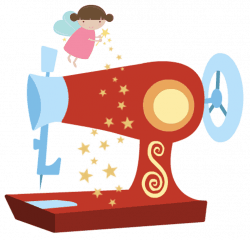
Machine Care
Always replace the cover after sewing to prevent dust and airborne lint settling on and in the machine. If you don’t think your cover really helps, a fabric one you made yourself really does the trick.
If you have an electronic machine, a surge protector is worth the investment.
Never leave your machine on, idle, for more than fifteen minutes. Turn it off when going to get tea or pressing the project or feeding the cat etc.
If you have to store your machine for long periods, the shed or garage is not ideal, as , apart from being undercover, it may as well be sitting outside with all the heat, dirt, pollen and small bugs that get in.
It never, ever hurts to refer to or even read (cover to cover) your machine’s manual. It will always tell you things you may not have known, especially the troubleshooting guide (usually at the back).
Do occasionally clean the lint from around the bobbin housing. You manual should give you instructions. Never blow the lint out, as it just pushes further in and condensation from breath doesn’t help either. A skinny vacuum nozzle or drinking straw held over the end is a great way to suck up lint, especially on an overlocker.
Modern machines do not need regular manual oiling BUT they will need a technician to re-grease internal gears and check that lint or rogue thread has not choked the mechanisms. We recommend once a year.







Safety
If you aren’t looking at the presser foot, take your foot off the foot control. The actual needle strike area is very small but still very dangerous, and unpicking from crooked sewing is also annoying.
Begin sewing slowly, gradually increase to a comfortable level. Starting fast can pull the top thread underneath the fabric and cause it to catch underneath. If you aren’t comfortable with your machine and you have speed control on the machine, starting on slow and gradually moving the slider is the best way of easing into sewing.
Make sure to put the presser foot down every time before sewing. Because presser feet are usually on a pivot, sometimes trying to sew with the foot up can cause the needle to strike the foot and break. Also the fabric flags up and down and won’t feed. Double check with some of the bigger presser feet, like a ruffler, as it is quite difficult to see if the foot is up or down, so always check.
Remove pins as they reach the front of the foot. Sewing over pins can hurt all sorts of things including; the presser foot; the needle; the needle plate; eyesight if the needle is broken; the hook underneath the plate if the needle deflects and scratches. Scratching most of those things can cause thread shredding.
Make sure you are sitting correctly in relation to the machine. That the machine is close enough at a comfortable height and that the chair is comfortable. Also that you re sitting in front of the needle, not dead centre to the machine.







Thread and threading
Use good quality! Old thread perishes, goes fluffy and can fade with age. Gran’s old thread never forms stitches well and it could also affect your tension. This goes for cheap no-name brand and also thread meant for overlockers.
Make sure your presser foot is up when threading so that your tension discs are open.
Check the type of thread preferred by the local technicians. Not all threads recommended by sewists are necessarily the best for your machine.
When changing thread, cut at the spool and pull the thread out from the needle. This means the thread is always running through the same way and not backwards through the tension discs.
When threading your machine, insert the thread onto the spool holder and let the thread run through your pinched right thumb and forefinger whilst threading with the left. This means you can feel everything happening with the thread as it goes including when the tensions are in the correct spot. This is called “flossing”.
Unless you are after a special effect and know how it’s done, always match the top thread to that in the bobbin.







Bobbins and bobbin threading
Always use recommended bobbins for your machine. It has been very finely calibrated with those in mind. Wearing and bad stitching may result of using any old bobbin especially if the metal bobbin you are using should be plastic.
When winding a bobbin, it is not recommended to wind at the highest speed. This often expands the bobbin through heat friction and the tension is not correct.
Never wind one colour over another for a number of reasons; each layer can compact all previous layers; contrasting colours can transfer dyes; squeezing the bobbin with too many layers can warp the bobbin; loose threads from multiple colours can become jammed. Always have enough bobbins on hand. They are not expensive and it can also skew bobbin tension.
If a needle breaks or you drop a bobbin, check with your fingers around the edge of the bobbin that there are no burrs or scratches that can loop thread underneath when sewing.
Never use broken or pet chewed bobbins. (True story, the cat was fond of bobbins)
Never overfill your bobbin, they wont fit or seat well.
Check that your bobbin tension is not too loose (the thread feels spongy) or too tight (the thread distorts the bobbin so badly it won’t come off the bobbin winder or doesn’t fit in the correct position).







Sewing
Hold the top thread when starting a line of stitching or the thread will catch underneath at the beginning. Alternatively, always make sure both threads go to the back when starting. Some machines are more prone to nest than others and small amount of nesting is allowable.
When you stop sewing, make sure the take-up leaver is at its highest position so that the needle won’t come un-threaded when you start sewing again. This tip is unnecessary if you have an electronic machine, as it always finishes its revolution correctly after every stitch.
Back stitch or lock stitch seams at beginning and end to prevent them coming apart. Some machines can be programmed to do this automatically. Also if every seam is to be finished off, it may not be efficient to do this every time.
Let the machine feed the fabric. If you pull, tug or overstretch the fabric, you can get wildly varying results and eventually a broken needle. You can direct your fabric with two index fingers.
Use the correct presser foot for the results you want. All standard accessories are listed at the very beginning of your manual if you want to know what they all do. Almost every technique has a presser foot that will make things easier.







Needles
Always change your needle before every major project. They get very tired very quickly, if you think about how many times they penetrate the fabric. This is especially true of embroiderers, where your machine gives you a stitch count.
If the fabric starts bruising or getting pulls or makes a banging noise as the needle penetrates, a needle change is well overdue!
Change the needle immediately you hit a pin with it. Even if you cannot see anything wrong with it, it may be bent, have broken the tip or have a small burr somewhere and may ruin your project further along.
Match your needles to the type of fabric you are sewing; Universal for synthetics, denim needles for jeans, ballpoint for knits, top stitch for thicker thread etc. Not matching needles to fabric or thread leads to skipped stitches and often the same horrible banging sound as that of a blunt needle.

